Deciphering Profitable Hidden Goals
Decode the underlying profitable search intent of online queries easily and create smarter content that converts and makes your buisness grow.
October 20, 2024
Searching online before a purchase has become a must-do activity for more than 80% of people.
Yes! Almost everybody starts their research online today.
And they do it with an underlying search intent.
But, what is User Intent?
User search or query intent is the underlying goal an internet searcher has when looking for a type of information on the web.
This means that not everybody has the same purpose in mind when they ask online queries. Another way to think about user’s intent is to consider what goals they want to achieve through that particular search.
One way to achieve success meeting your prospects needs, is to create content for different stages of the buyer’s journey.
Why? you're wondering.
Because you as a SEO expert, who always look for new techniques to make your website rank higher, need to be aware of these hidden intents and create smarter content to delight prospects on every stage of their buying journey.
What are the Main 4 Types of User Intent?
Broadly speaking, search intentions are just four:
-
To land a specific website (Navigational)
-
to get information about a topic (Informational)
-
to compare similar solutions ( Commercial)
-
To do a purchase (Transactional).
Why is User Intent Important for SEO?
Targeting search intent in your content helps you provide readers with relevant information that matches their search.
As a marketer, you want to come across those who look for information related to your products and services on the Internet. To be successful in this endeavor you have to target their keywords and search intent, behind the words.
This gives you the opportunity to showcase you are an expert in that topic, understand the problems and pains related to it, offer an excellent solution to their problem. You also show the way you do your job to bring the searcher peace of mind.
This approach lets you rank higher in search engine results and meet your prospects easily.
How to Identify User Intent? Examples
One way to decipher user intent in search behavior is to pay attention to the type of words web searchers use and discover what stage of the buyer journey they are.
Some are on the problem awareness stage and so they look for information, Other are on the consideration stage and would like to learn about the advantages or disadvantages of similar products that can solve their problem. Finally some are on the decision stage and they are ready to buy.
Informational Intent
People jump to the internet to look for information about any topic. The first step is to ask a question to a search engine. This question may have two different underlying informational goals
Essential information
This happens when people want a quick and to the point information. Examples
-
How many people live in New York?
-
How much is the exchange rate of dollar to euros today?
-
Where was Phil Collins born?
Most of this kind of questions are answered by search engines, choosing the most accurate piece of information available.
That snippet is part of a long article and the reader could read it thoroughly for more details.
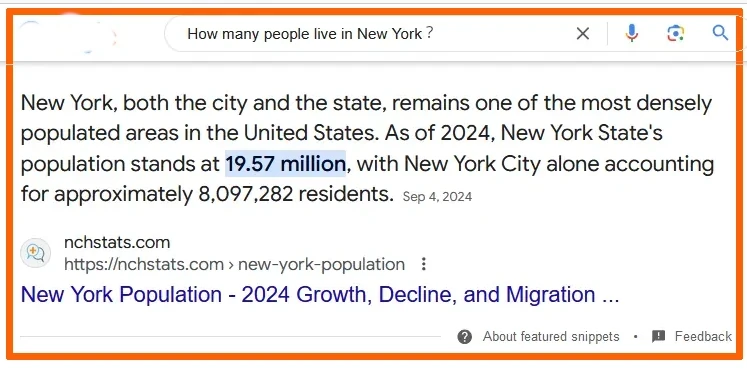
Extensive information
In this kind of search people are aware they have a problem and are looking for relevant information that may help them.
Here the reader is more inclined to read some of the entries the search engine present to them as they are looking for a solution to their problem.
Let's suppose you want to whiten your teeth because you don't like the color they have today.
In the search bar, type in your question: "How to whiten my teeth?"
Then check the results and choose which one you find more attractive to start reading.
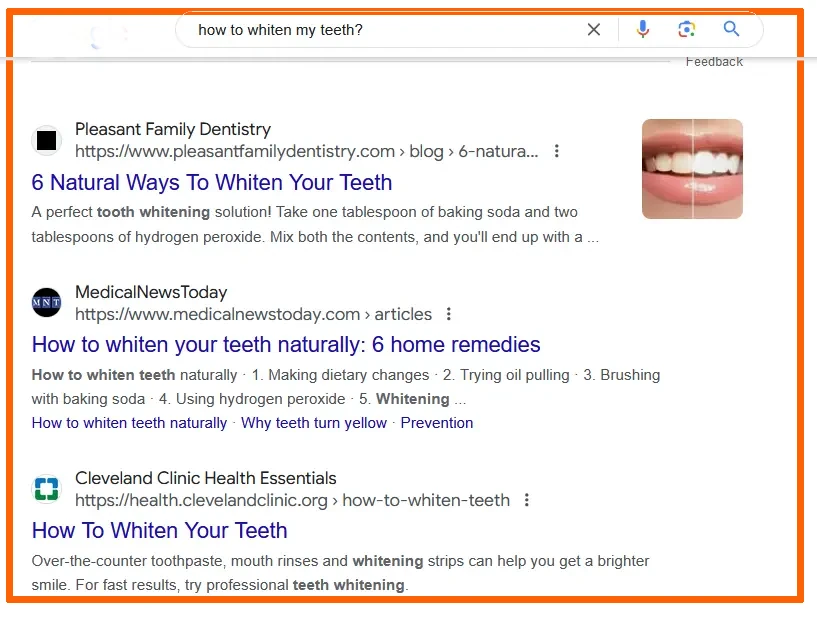
Commercial Intent
When searchers know that they can get a solution to their problem or need they surf the Internet in search of detailed information about those available solutions.
This is the time when prospects compare products, benefits, read reviews and pay attention to word of mouth to be able to make a smart decision. At this point they don't want to make mistake or lose money.
So you write in the bar search: "Reviews about products to whiten my teeth" And, the answer to your query includes articles like
-
Six whitening products to whiten your teeth in 2024.
-
Best teeth whitening home kit.
-
The 7 best whitening kits.
Their headlines suggest you'll get plenty of information about specific products.
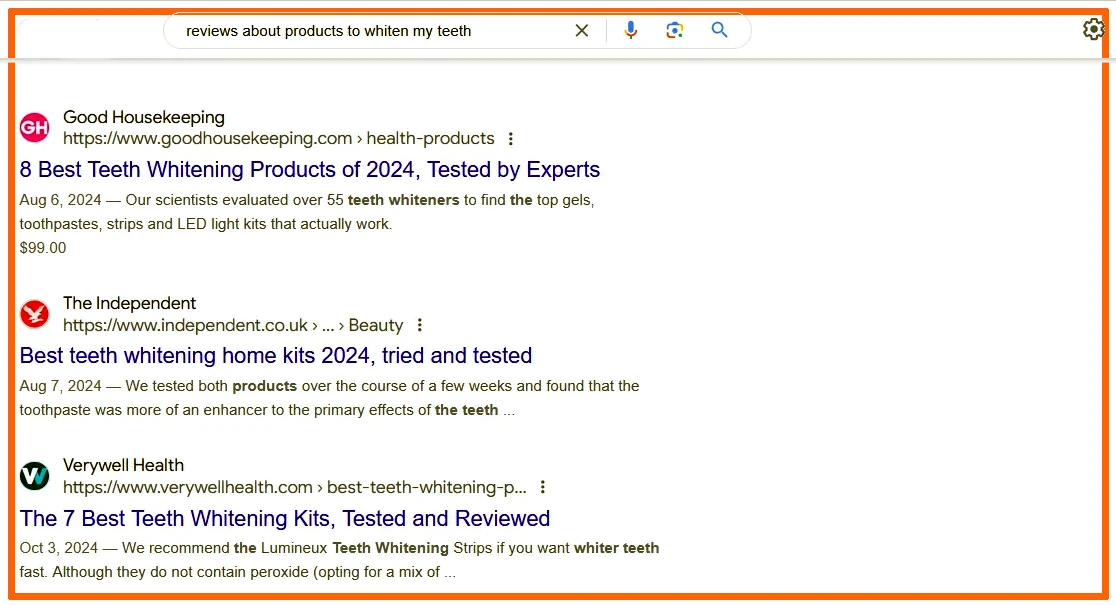
Transactional Intent
When searcher have made up their mind to buy a new gadget they consider where to buy them. Depending on the type of purchase they are doing, they may want to buy it close to their home, or get the best price available on the internet, or where the delivery is quicker.
Once they are on the website, they may be happy if the process is clear and easy to follow. They have to feel completely assured this is their best choice and free of risk. Guarantees are also important on this stage.
So, to start your search you type in the search bar: "where can I buy teeth whitening products"?
Here you can add your preference like, near my house.
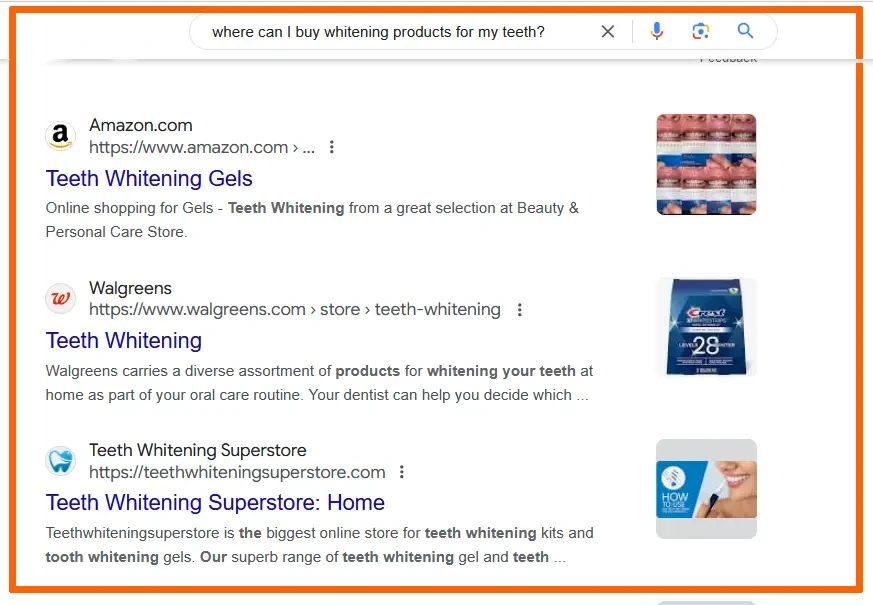
Navigational Intent
When people visit webpages regularly, like going to their favorite social media platform, their bank or their own website they just type the name of the website in the browser search bar to land that specific destination. Here the underlying purpose is navigational.
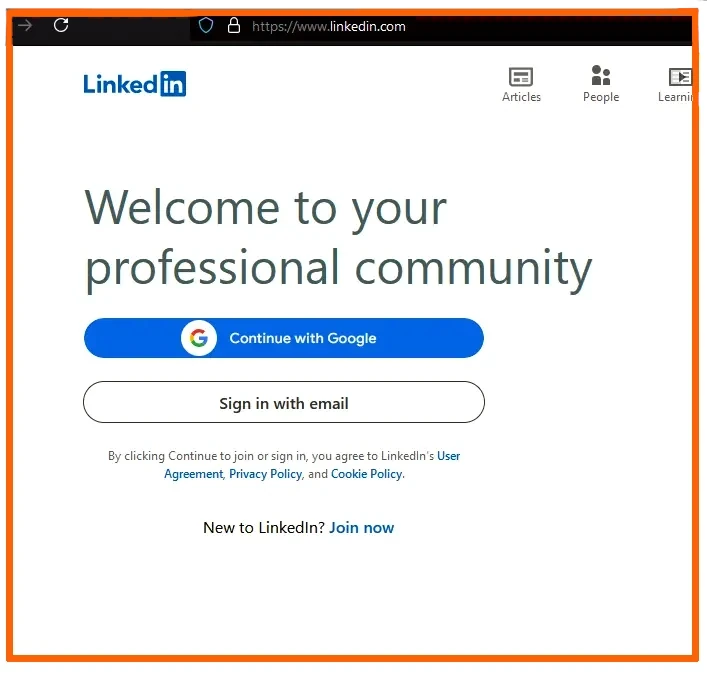
Conclusion
With a little adjustment, and consideration of user search intent, you can create content that not only delights your prospects but also helps you to be relevant in their online buyer's journey and as a result your business becomes more profitable.
Understanding the different search intents of online queries is fundamental to optimize your keywords and so get better results from the creation of content.
Add a comment